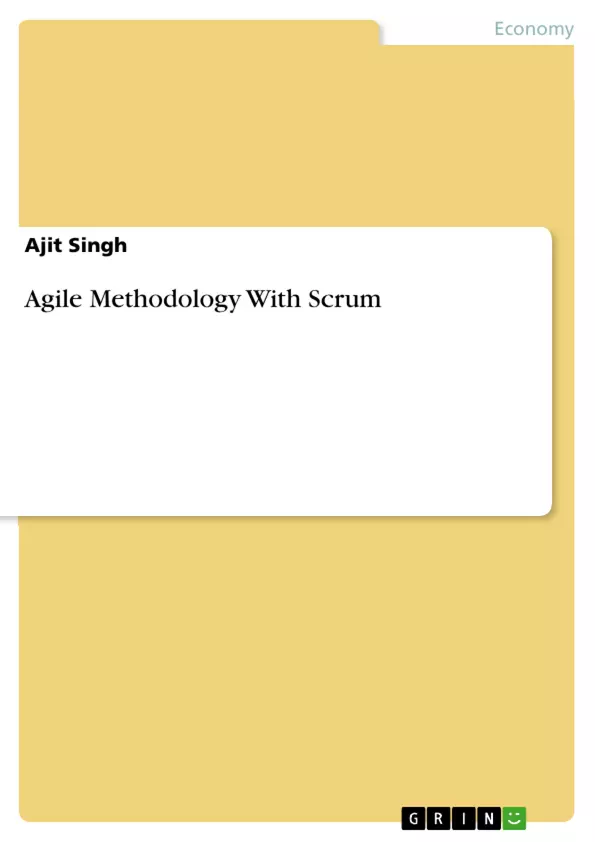This work is about how lately Agile and especially Scrum have become more and more popular. A lot of people in higher management see the agile way of working as the key to success. But is this actually true? Have we found the silver bullet? Can every individual work in an agile way? If yes, does this mean that the team that he is part of will also adopt and use the agile way of working and thinking successfully? All those questions triggered this research.
One of the first questions we ask ourselves for each of our project implementations is "Which development methodology should we use?". This is a topic that gets a lot of discussion as it’s the way of organizing the work for the project and not as often misinterpreted about a style of project management or a specific technical approach. The two basic and most popular methodologies are: 1.Waterfall: which is known as the "traditional" approach, and 2.Agile: a specific type of Rapid Application Development and newer than Waterfall, but not that new, which is often implemented using Scrum. Both are usable, mature methodologies.
I started by providing basic information about both methodologies (Waterfall and Agile). I try to make the differences between the two methodologies visible and by giving more emphasis to the second one i present the history behind the methodology, the advantages and disadvantages and i try to come to a conclusion on what is agile and what is not. Next, at section two i briefly present the basic Agile Methods and Practices. I continue with section 3, that i explain Scrum and all the ceremonies and roles related to this methodology.
Inhaltsverzeichnis (Table of Contents)
- Section 1: Waterfall versus Agile
- 1.1 Waterfall Model design
- 1.2 Agile Methodologies
- Section 2: Most commonly used Agile Methods & Practices
- 2.1 Introduction
- 2.2 Agile Methodologies
- 2.3 Agile practices
- Section 3 - Scrum
- 3.1 Roles
- 3.2 Artifacts
- 3.3 Workflow
- 3.4 Work & Delivery Flow-Example
Zielsetzung und Themenschwerpunkte (Objectives and Key Themes)
This research aims to explore the increasing popularity of Agile methodologies, particularly Scrum, in software development. It investigates the effectiveness of these approaches compared to traditional Waterfall methods, analyzing their advantages, disadvantages, and suitability for various situations.
- Comparison of Waterfall and Agile methodologies
- Advantages and disadvantages of Agile and Scrum
- The history and evolution of Agile methodologies
- The key principles and practices of Agile software development
- The application of Scrum in software development projects
Zusammenfassung der Kapitel (Chapter Summaries)
- Section 1: Waterfall versus Agile
- 1.1 Waterfall Model design: This section introduces the Waterfall model as the traditional, linear-sequential approach to software development. It outlines the distinct phases of this model, from requirement gathering to maintenance, and discusses its strengths and weaknesses.
- 1.2 Agile Methodologies: This section defines Agile methodologies as time-boxed, iterative approaches that prioritize incremental delivery. It explores the Agile Manifesto and its core values, contrasting it with the Waterfall approach. It also emphasizes the emergence of Agile as a reaction against the limitations of traditional methods.
- Section 2: Most commonly used Agile Methods & Practices
- 2.1 Introduction: This section provides an overview of various commonly used Agile methods and practices.
- 2.2 Agile Methodologies: This section discusses different Agile methodologies and their applications.
- 2.3 Agile practices: This section delves into specific practices used within Agile software development.
- Section 3 - Scrum
- 3.1 Roles: This section outlines the different roles involved in Scrum methodology.
- 3.2 Artifacts: This section describes the key artifacts used in Scrum.
- 3.3 Workflow: This section explains the workflow and ceremonies involved in Scrum.
- 3.4 Work & Delivery Flow-Example: This section provides a practical example of the work and delivery flow within Scrum.
Schlüsselwörter (Keywords)
The main keywords and focus topics of this work include Agile methodologies, Scrum, Waterfall model, software development, system development life cycle (SDLC), user stories, iterations, Agile Manifesto, rapid application development, and software engineering.
- Quote paper
- Ajit Singh (Author), 2019, Agile Methodology With Scrum, Munich, GRIN Verlag, https://www.grin.com/document/488863



